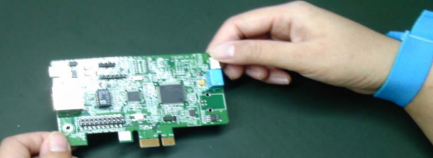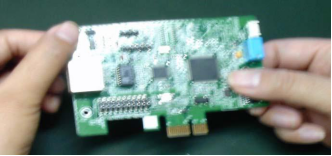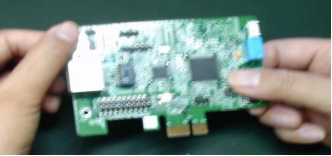Inspection Standard for the Appearance of PCB Assembly
1. Purpose
Establish PCBA appearance inspection standards to provide guidance for the operation of the production process and product quality assurance to ensure that the product quality meets the needs of customers inside and outside the company.
2. Scope of application
2.1 This standard is universally applicable to the appearance inspection of PCBA of all products produced by the company (except in the case of no special regulations), including products produced internally by the company and processed outside the company.
2.2 Special regulations mean that PCBA standards can be appropriately revised due to the characteristics of parts or other special needs, and their effectiveness should exceed the general appearance standards.
3. Precautions for the standards:
3.1 The unqualified in this standard refers to the unqualified judgment specified in the standard.
3.2 Requirements for various appearance inspection items of IPQC or FQC are respectively required in the judgment.
3.3 If the product does not meet the content of the unqualified judgment;
3.4 If it meets the content of the unqualified judgment, it will be regarded as a non-conforming product, and it will be dealt with in accordance with the treatment method of the non-conforming product.
3.5 The schematic diagram is for reference only, and it is not required for parts with diagrams.
3.6 If there is no schematic diagram for some product parts categories, you can refer to the schematic diagrams of other categories.
3.7 The maximum size in the standard refers to the maximum size measured in any direction.
3.8 When filling in the quality report of each process, the defect item list indicated in this document should be selected as the basis for recording the corresponding defect. If there is a defect that is not indicated in the defect item list, it should be filled in the remarks column below the quality report Defect name.
4. How to identify products and how to deal with defective products?
4.1 Mark the defective part of the unqualified product (marked with a small red arrow label), and record it in the corresponding defect column on the inspection report. The unqualified product should be separated from the qualified product to avoid confusion with the qualified product.
4.2 All unqualified products must be returned to the corresponding production process for repair (or rework). For special machine boards, such as copper skin, PCB green oil falling off, green oil blistering, PCB patching, tin on the circuit, PCB patching Machine boards such as oil and PCB foaming are classified according to the actual situation of the company and handled separately.
5. The definition of standards:
5.1 Standard
5.1.1 [Acceptance Criteria]: Acceptance criteria are ideal condition, acceptance condition, unqualified defect condition (rejection condition).
5.1.2 [Target Condition]: This assembly condition is not in line with the near ideal and perfect assembly condition, which can have good assembly reliability and is judged to be an ideal condition.
5.1.3 [Accept Condition]: This assembly condition is not close to the ideal condition, and it is judged to be an acceptance condition.
5.1.4 [Reject Condition]: This assembly situation fails to meet the standard, which may affect the functionality of the product, but based on appearance factors to maintain the competitiveness of the company's products, it is judged as a rejection condition.
5.1.5. Priority of engineering documents, production process documents and quality work guidelines, etc.: When the content of the appearance acceptance standard conflicts with the content of the engineering documents, production process documents, and quality work guidelines, the content of other guidelines listed shall be used first. For other special requirements not listed in the appearance acceptance standard, please refer to the quality work guidelines or other process documents.
5.2 Deficiency definition:
5.2.1 [Critical Defect]: Refers to a defect that is sufficient to cause harm to the human body or machinery, or endanger the safety of life and property. It is called a serious defect and is represented by CR.
5.2.2 [Major Defect]: Refers to a defect that has lost the practicality of the product's actual function or caused a decrease in reliability. Product damage or poor function is called a major defect, and it is represented by MA.
5.2.3 [Minor Defect]: Refers to the performance of a unit defect, which does not substantially reduce its practicality and can still achieve the desired purpose. Generally, it is the difference in appearance or mechanism assembly. Express it.
6. Reference documents
Refer to IPC-A-610 inspection standard "Acceptability of Electronic Assemblies"
7. Preparation before inspection:
7.1 Inspection conditions: indoor lighting above 500LUX;
7.2 Inspection tools: 10x illuminating magnifying glass, 40x microscope;
7.3 ESD protection: Every contact with PCBA semi-finished products must be equipped with electrostatic protection measures (usually wear an anti-static wristband connected to an electrostatic grounding wire or wear anti-static gloves).
7.4 Before the inspection, it is necessary to confirm that the working platform used is clean and wear anti-static cleaning gloves.
8. Description and schematic diagram of unqualified items: see attached page for details
8.1 PCBA holding method
8.1.1 [Ideal Condition]-Target Condition
1. Wear clean anti-static gloves and well-coordinated electrostatic protection measures;
2. Hold the edge or corner of the board to perform inspection
8.1.2 [Acceptable Condition]-Accept Condition
Equipped with good electrostatic protection measures, hold the edges or corners of the PCB for inspection.

8.1.3 [Reject Condition]-Reject Condition
There are no electrostatic protection measures, and direct contact with the surface of the conductor and the tin point.

9. Explanation and definition of soldering terms
1). Dipping tin: A coating with solder adhesion is formed on the surface. The smaller the dip angle, the better the adhesion.
2). Dipping angle: the angle enclosed by the wiring between the solid metal surface and the molten solder (as shown in the figure below), generally the interface between the liquid surface and other welded bodies or liquids. The smaller the angle, the better the solderability. The better.
3). Non-stick tin: no solder-like adhesive coating is formed on the tin surface, and the tin-stick angle is greater than 90 degrees at this time.
4). Tin shrinkage: The original tin-dipped solder retracts and sometimes a very thin solder film remains. As the solder shrinks, the dip angle increases.
5). Solderability: Surface characteristics are easily stained by molten solder.

10. Process standard for ideal solder joints
1). The solder joints appearing on the solder side of the board (Solder Side) should be solid and flat-topped cones. The two outer edges of the cross-sectional view should show uniform arcs of crescents, and the tin filling in the through hole should be the part The feet are evenly and completely wrapped.
2). The bottom area of the cone should be the same as the solder pad (Land, Pad, Annular ring) on the board.
3). The climbing height of the flat-topped cone and the tin pillar is about three-quarters of the part feet protruding from the circuit board; the maximum height should not exceed one-half or 80% of the diameter of the solder pad (otherwise it is easy to cause Short circuit).
4) The amount of tin should be filled with the edge of the solder pad and the foot of the part, and the soldering angle should be close to zero. The better the soldering angle, it means that there is good solderability (Solder Ability).
5). The tin surface should show gloss (not affected by other factors, such as being exposed to chemicals, etc.): its surface should be smooth, uniform, and there should be no irregularities such as small gaps, cracks, etc. Bubbles, inclusions or bumps etc. occur.
6) For boards with plated through holes, the solder should climb into the hole from the solder surface and rise to the component side (Component Side). The solder on the solder surface should be smooth, uniform and in line with points 1 to 5.
11. General requirements standard: solderability process level
11.1 The requirements for good solderability are defined as follows:
11.11 The tin dip angle is less than 90 degrees;
11.12 There is no bad solder such as shrinkage tin and non-stick tin in solder;
11.13 It can be distinguished that there is tin wetting on the solder contact surface.
11.2 Tin beads: Accepted under the following two conditions, the rest are unqualified.
11.21 (Tin side) Tin beads with a diameter less than 0.25mm cannot be stripped.
11.22 The diameter of the part surface is less than 0.13mm, and it should not stick to the tin bead on the foot of the part and cause no short circuit.
11.3 Too much tin: the following conditions are acceptable, and the rest are unqualified.
11.31 The tin surface is raised, but there is no undesirable phenomena such as tin shrinkage and non-stick tin;
11.32 Solder does not extend to PCB or parts;
11.33 It is necessary to see that the tin surface is exposed outside the feet of the parts (in line with the length of the parts feet);
11.34 The tin dross that is invisible by visual inspection is acceptable.
11.35 Meet the standard of tin tip (PEAKS/ICILES) or tin bead on working hole.
Too much tin rejection icon:
1) The solder extends to the body of the part;
2) Visually observe that the foot of the part does not come out of the tin surface;
3) The solder extends beyond the solder pad and touches the board.
11.4 Requirement Standards of Parts Foot Length
11.41 The length of the parts feet must be exposed to the tin surface (the parts feet can be exposed by visual inspection).
11.42 The protruding length of the foot of the part from the board surface is greater than 0.2mm and less than 2mm.
11.5 Cold welding/bad solder joints
11.51 There should be no cold welding or bad solder joints.
11.52 There should be no unmelted solder paste on the solder joints.
11.6 Tin crack
There must be no solder cracks.
11.7 Tin tip
No tin tip (too long can easily penetrate the insulating sheet and cause grounding with the iron shell and damage the motherboard).
11.8 Tin Hole/Pin Hole
11.81 Visually visible tin holes/pinholes are not accepted.
11.82 Tin holes/pin holes cannot penetrate through holes.
11.83 There should be no defects such as tin shrinkage and non-stick tin.
11.9 Holes/Blow Holes
There must be no broken holes/blow holes.
11.10 Tin bridge (short circuit)
There must be no tin bridge, which will cause a short circuit when bridged between two conductors.
11.11 Tin dross
There must be no visible tin dross.
11.12 Too much tin in the assembly screw hole
11.12.1 Assemble the tin bead and tin tip on the screw hole tin pad on the surface of the part, the height shall not be greater than 0.6mm.
11.12.2 The tin surface cannot appear in the assembly screw hole and eat too much tin.
11.12.3 The inner hole wall of the assembly screw hole shall not be stained with tin.
12. General requirements standards: PCB/parts standards
12.1 PCB/part damage: minor damage:
12.1.1 Acceptable for minor damage
●Scratches and scratches on the body of plastic or ceramic parts, but the internal components of the parts are not exposed.
●Slight scratches on the part body will not damage the part packaging or cause the parts to be unclearly marked.
12.2 PCB cleanliness
12.2.1 There should be no foreign impurities such as cut off parts of parts, (obvious) fingerprints, and dirt (dust).
12.2.2 Part materials such as thermal paste and circuit adhesives will not be accepted if they are offset.
12.2.3 No-clean flux residues (such as water marks) can be accepted, white residues appearing as a thin layer of residues (such as water marks) can be accepted, but powdery, granular and crystalline The state will not be accepted.
12.2.4 Using a magnifying glass of 3 times or less, visible tin dross will not be accepted (including visually visible rejection).
12.2.5 Loose metal burrs on the parts feet are not allowed.
12.3 PCB delamination/blistering is not acceptable.
12.4 Gold Finger Standard
12.4.1 The golden finger shall not be lifted or damaged, and the non-main (non-functional) contact area may be damaged, but the skin shall not be lifted.
12.4.2 Important parts of the gold finger should not be stained with any type of solder containing one-size solder balls, tin dross, stains, etc.
12.4.3 Other small flaws in the gold finger contact area, any size exceeding 0.25mm will not be accepted.
12.4.4 Acceptable standards for gold finger dip tin:
The diameter of each point is not more than 0.3mm, each root is not more than one point, and each side is not more than 3 points.
12.4.5 Acceptable criteria for scratching of golden fingers:
Scratches are limited to no exposed copper, the entire row of fingers has only one point, the depth of the notch is less than 0.07mm, and the length of the notch is less than 0.3mm.
12.5 Bend:
PCB board bending or board warping does not exceed (1 PCB thickness).
12.6 Scratches:
12.6.1 Scratches as deep as the PCB fiber layer cannot be accepted.
12.6.2 The scratches are so deep that the PCB circuit exposed copper is not allowed.
12.6.3 Line repair and green oil should not be too thick and the color difference should not be too obvious, and there should be no bare copper phenomenon.
13. Other standards
13.1 Polarity
Polarized parts must be placed in the correct polarity according to the instructions or PCB markings. The first piece of each batch must be made to find out whether there is any difference in the location of the parts and the actual content of the parts.
13.2 Sampling inspection
1) Refer to AQL International Inspection Standard II CR=0 MAJ=0.4 MIN=0.65 inspection. (See attached page for AQL sampling standards)
2) The quantity is within 100PCS, including full inspection.